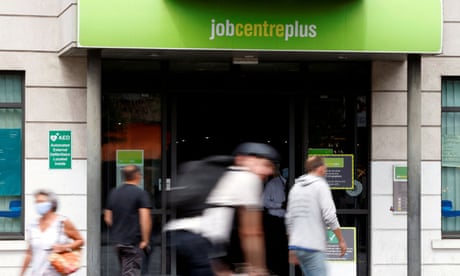
The number of people out of work rose by more than expected in February, raising concerns that employers are beginning to lay off staff in response to high interest rates.
The Office for National Statistics said the unemployment rate increased to 4.2% in February from 3.9%, well above the 4% expected by City economists.
Analysts said the cooling effects of higher interest rates were leading to more redundancies and discouraging employers from hiring staff.
Despite rising unemployment, regular pay growth excluding bonuses was stronger than expected at 6% in the three months to February, underlining the dilemma facing the Bank of England over when to start cutting interest rates. Pay growth of 6% was down from 6.1%, but stronger than the 5.8% expected by economists polled by Reuters. Total pay, which includes bonuses, was unchanged at 5.6%.
Yael Selfin, the chief economist at KPMG UK, said that overall the latest ONS data suggested the Bank would be on track for a summer cut in interest rates.
“The slight easing in regular pay growth will bring some comfort for the Bank of England which has relied on the pay data as a key gauge of domestic inflationary pressure,” she added.
“Moreover, the rise in unemployment rate paints a picture of a less tight labour market. The exact timing of the first rate cut will be a hot debate for the monetary policy committee in the coming months.”
The hospitality sector handed workers an average 8.4% pay raise and City workers secured an 8.1% increase.
When falling headline inflation rates were taken into account, real wages rose at the fastest pace in two-and-a-half years.
Real total pay adjusted for consumer price inflation was 1.8%, while real regular pay grew by 2.1% – both were last higher in July to September 2021.
The inactivity rate, which measures the number of people of working age who are in work or actively looking for work, also increased in February as workers continued to leave the jobs market due to ill-health.
Bank of England officials have said the rising inactivity rate was a worry as it reduced the workforce and forced employers to pay higher wages, pushing up costs and inflation.
There are about 850,000 additional working-age people jobless because they are no longer seeking roles or are unable to start, than before the pandemic began.
Economists believe the rise driven primarily by higher levels of long-term sickness among younger and older workers.
“Today’s jobs figures are surprisingly poor, with a steep fall in employment and a sharp rise in those out of work, including an unexpected rise in unemployment,” Tony Wilson, the director at the Institute for Employment Studies, said.
“However, most concerning is the rise in economic inactivity, which is the measure of those not in work but not looking for work, which is even higher now than it was in the depths of the pandemic.”
Ben Harrison, the director of the Work Foundation at Lancaster University, said the UK workforce is “sicker and poorer”, and “an international outlier”.